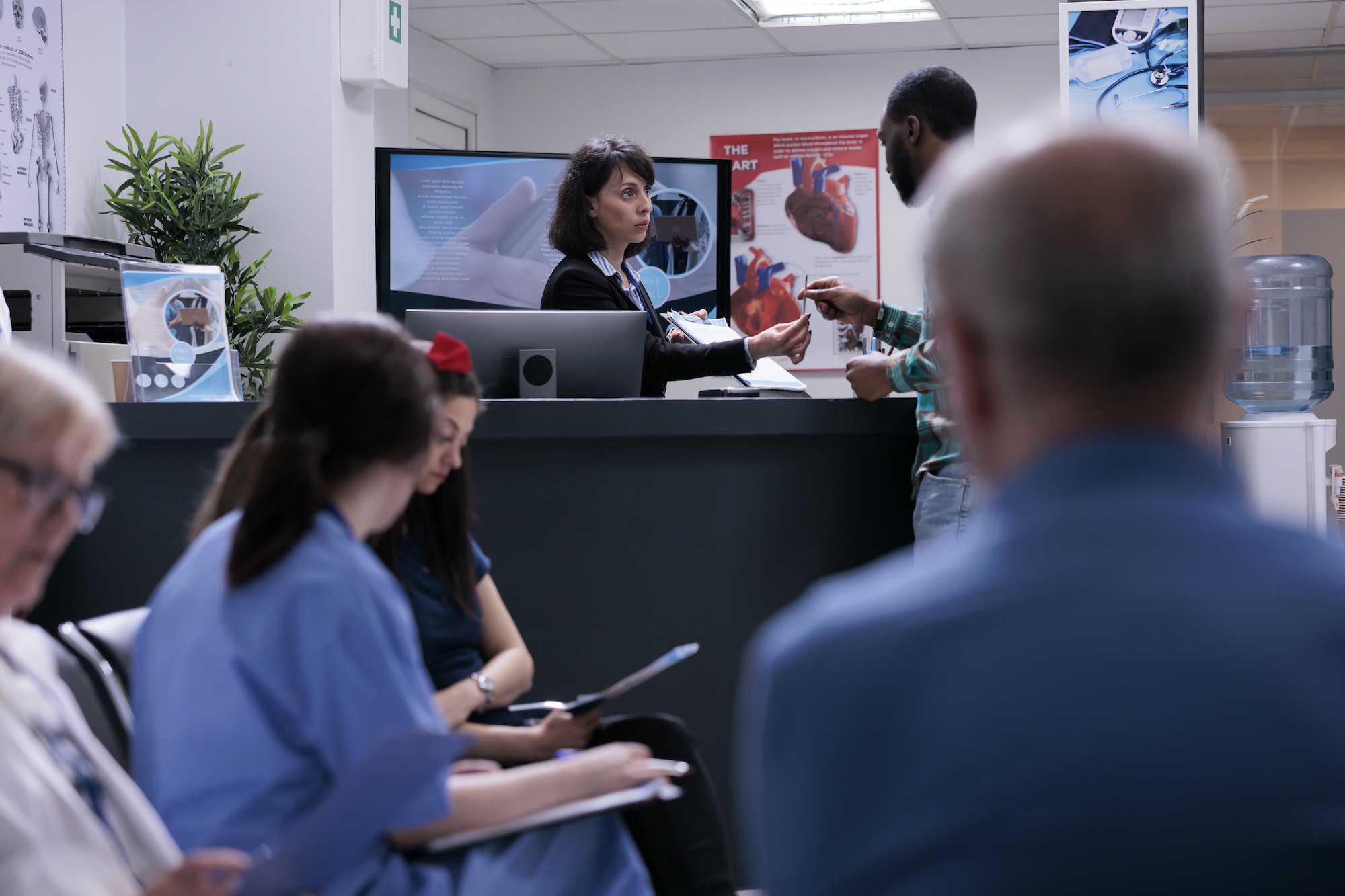DISCLAIMER: The below blog entry was written by an outside, unrelated party and does not necessarily express the opinions or views of or associated with the RemoteICU brand or the individuals associated with the RemoteICU brand. The blog is not necessarily endorsed or supported by RemoteICU nor was the entry reviewed and accepted by individuals associated with RemoteICU. The blog entry is provided simply to address and create interest in topics of import related to telemedicine. Your own independent research and decision-making and seeking of expert / professional opinions are required before you make any decisions whatsoever or form any opinions with respect to any topics addressed therein. By reading the blog entry, you consent to accepting the terms and conditions in this disclaimer.
Hospitals face common staffing challenges
The Role of Telemedicine in Staffing Solutions…
Hospitals face common staffing challenges, including recruitment and retention difficulties, emotional well-being concerns of staff, financial constraints affecting competitive pay, issues with physician relocation, and a heavy reliance on travel nurses.
This exploration delves into these issues, introduces two additional factors, proposes solutions, and addresses three frequently asked questions on the topic.
1. Navigating the Maze of Recruitment and Retention
Challenge: Hospitals often struggle to attract and retain qualified staff due to competitive job markets and high stress.
Solution: Improving workplace conditions, offering competitive salaries, and providing opportunities for professional development can enhance retention and attract talent.
2. Safeguarding the Emotional Well-being of Healthcare Workers
Challenge: The high-stress environment in healthcare can lead to burnout and emotional exhaustion among staff.
Solution: Implementing support systems like counseling, stress management programs, and ensuring adequate rest periods can help mitigate these effects.
3. Addressing Financial Constraints and Competitive Compensation
Challenge: Limited financial resources can hinder the ability to offer competitive salaries, impacting recruitment.
Solution: Exploring alternative funding sources, optimizing budget allocations, and advocating for increased healthcare funding can improve financial flexibility.
4. Overcoming the Challenge of Physician Relocation
Challenge: Geographic relocation can be a barrier for staffing, limiting the pool of available talent.
Solution: Offering relocation assistance and remote work options where possible can expand the talent pool.
5. Reducing Dependence on Travel Nurses for Staffing Solutions
Challenge: Dependence on travel nurses can be costly and does not provide a long-term staffing solution.
Solution: Building a robust permanent staff and using travel nurses strategically for short-term needs can create a more stable workforce.
Additional Reasons and Solutions
6. Tackling the Implications of an Aging Healthcare Workforce
Challenge: An aging workforce can lead to a higher retirement rate among experienced staff.
Solution: Implementing mentorship programs to transfer knowledge to younger staff and encouraging phased retirement can help manage this transition.
7. Embracing Technological Advancements for Staff DevelopmentChallenge: Rapid technological changes require constant upskilling, which can be a barrier to keeping staff updated. Solution: Investing in ongoing training and education programs can ensure staff are proficient in the latest healthcare technologies. |  |
Technological Innovation for Well-being
The study on the use of immersive virtual reality (VR) technology for enhancing healthcare workers’ well-being is a prime example of how technological innovation can transform the healthcare workplace. VR, a cutting-edge technology once reserved for entertainment and gaming, has found a meaningful application in improving the mental and physical health of those on the front lines of medical care. This adaptation demonstrates a broader trend of leveraging technology to solve real-world problems, moving beyond its traditional applications to address critical issues like stress, fatigue, and burnout among healthcare professionals.
The implications of this are significant.
By integrating VR breaks into the routine of healthcare workers, we see a direct application of technology that not only contributes to better health outcomes for the staff but also sets a precedent for the adoption of innovative solutions in the healthcare sector. This approach encourages a shift in how we think about workplace well-being, advocating for a proactive and technologically driven strategy to enhance employee satisfaction and efficiency. The success of VR in this context underscores the potential of other emerging technologies to address workplace challenges, signaling a promising avenue for future innovations aimed at supporting the workforce in high-stress environments like hospitals and clinics.
Link to research: https://clinicaltrials.gov/study/NCT04132141
Details:
NCT Number NCT04132141
Study Title VR Breaks on Shift-worker Alertness
Study URL https://clinicaltrials.gov/study/NCT04132141
Study Status TERMINATED
Conditions Burnout, Professional
Interventions OTHER: Virtual Reality Headset with curated content
Sponsor George Washington University
Collaborators
Study Type INTERVENTIONAL
FAQs
Q1: How can hospitals improve staff morale and reduce turnover?
A1: Fostering a positive work environment, recognizing staff achievements, and offering competitive benefits can improve morale and reduce turnover.
Q2: What role does technology play in addressing staffing challenges?
A2: Technology can streamline operations, reduce workload through automation, and facilitate remote work options, addressing some staffing challenges.
Q3: How can hospitals address the shortage of specialized healthcare professionals?
A3: Developing specialized training programs in partnership with educational institutions and offering scholarships or incentives for those entering critical care fields can help alleviate shortages.
By addressing these challenges with strategic solutions, hospitals can create a more stable, efficient, and satisfied workforce, ultimately leading to better patient care and outcomes.











































